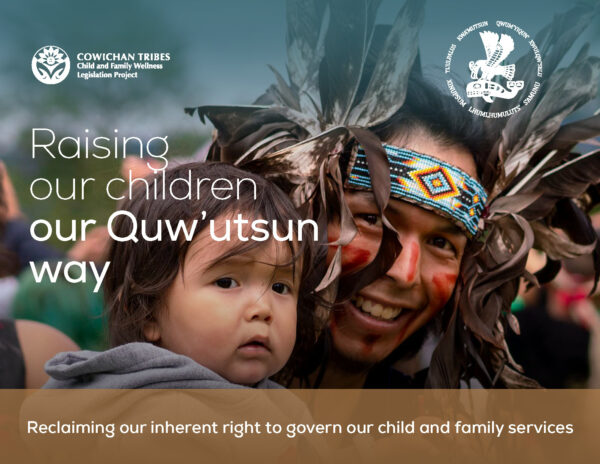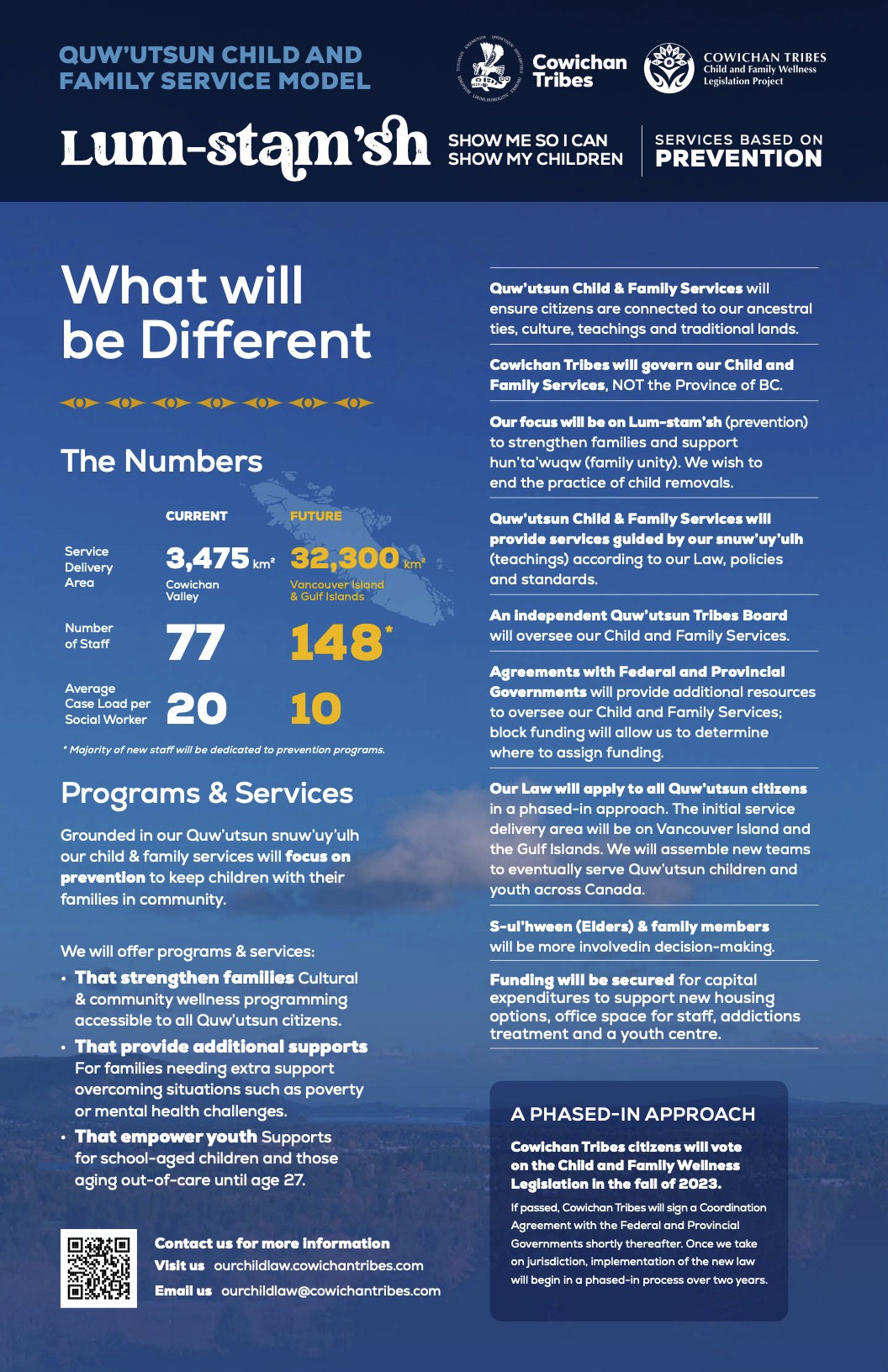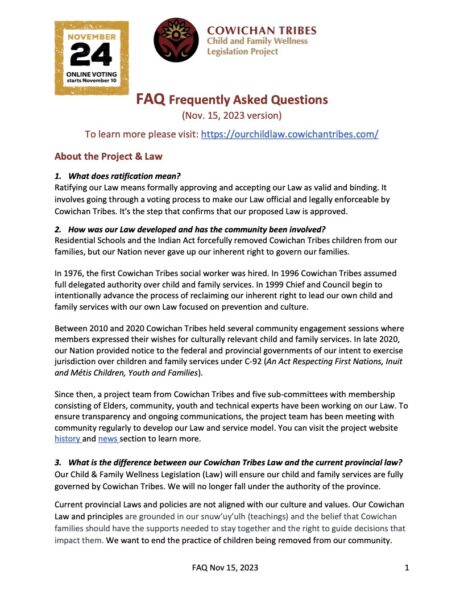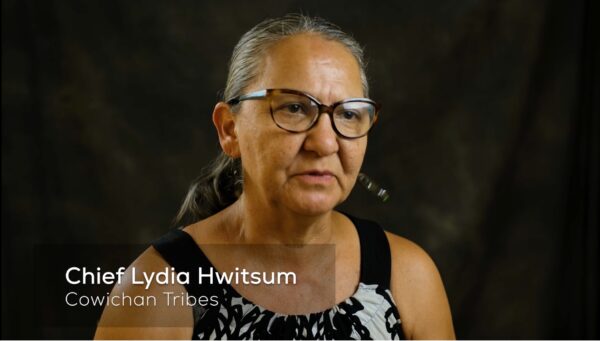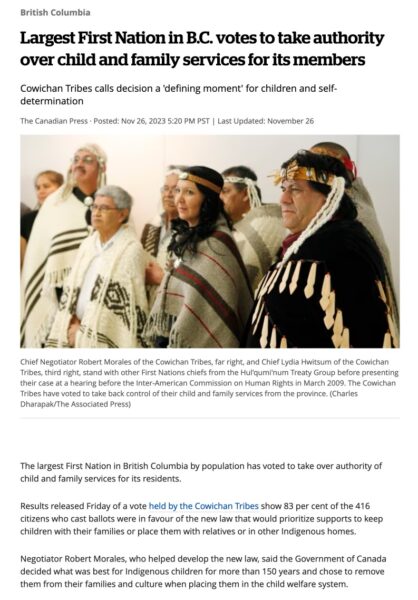
On November 24th, 2023 Cowichan Tribes Citizens passed the Snuw’uy’ulhtst tu Quw’utsun Mustimuhw u’ tu Shhw’a’luqw’a’ i’ Smun’eem –“The Laws of the Cowichan People for Families and Children”. A total of 416 citizens exercised their right to vote, with 83% casting their votes in favor and 17% expressing opposition.
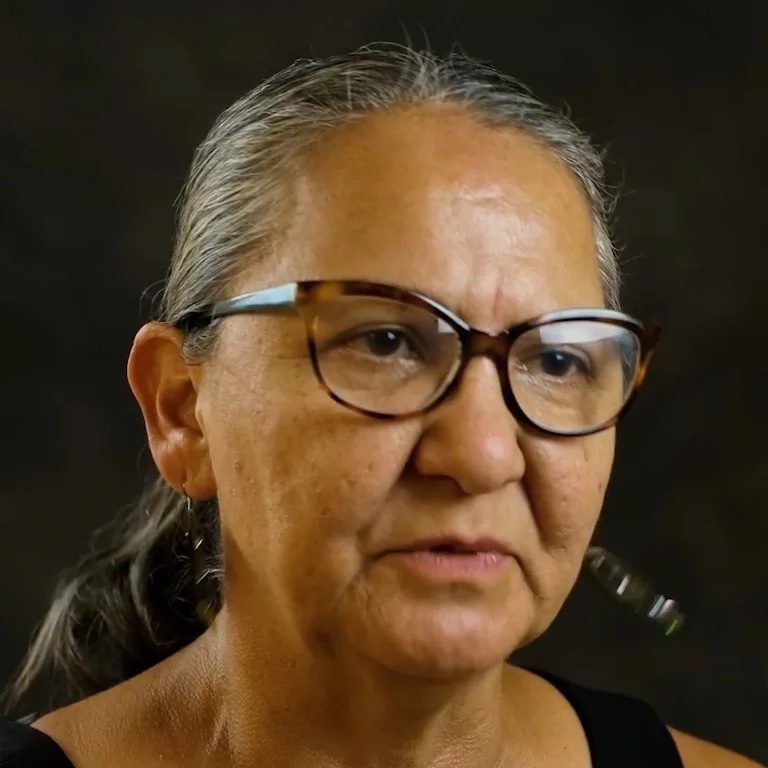
What’s Next?
Cowichan Tribes will finalize and sign a Coordination Agreement with the Federal and Provincial Governments in the spring of 2024. Once we take on jurisdiction, we will begin implementing our Law in a phased-in approach over a two-year period.
About Our Law
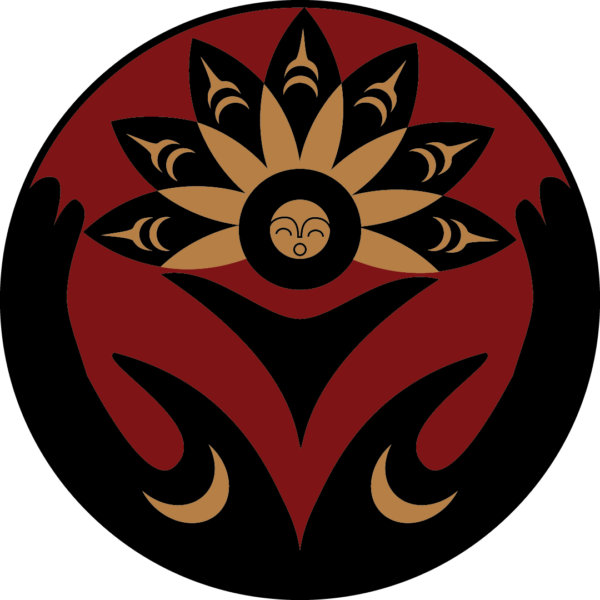

About our logo
My name is Charlene Johnny, and I am a Quw’utsun artist. I grew up in foster care and moved to Vancouver in 2001, where I now call East Vancouver home. Being a product of and growing up in the child welfare system, I have embraced my roots and connection to who I am by creating and practicing art. I enjoy using traditional design elements of the landscape and creators’ creatures and transforming them into modern displays. I have over 10 years of experience with various mentors executing Coast Salish art in different forms including graphic design. I am a knowledge keeper and storyteller. My art form is inspired by nature, Coast Salish design elements are just as much a part of the landscape, the same way that our language, songs and dances are. As an Indigenous steward and artist of the land, I think it is important to see visual representations of our art and have spaces to express this.
I have grown into my identity as a Coast Salish artist as my roots are the core of who I am as a person and how I identify and see the world. There have been many full circle moments of discovery with my art practice, and this is one of them. The logo features the circle of life. I have used flower petals to represent our growing children. As our S-ul’hween (Elders) have taught us, our children are our flowers. Each petal represents one of the seven Quw’utsun Villages. In nature we are surrounded by sacred geometry. The direct connection is no coincidence, and parallels the ideology of the sacredness of nurturing and raising our children. As our young ones grow in our territory and villages we are cultivating the values of the land, and the beliefs of our people. The hands at the bottom are a visual representation of Quw’utsun Hwulmuhw upholding and protecting our children, and our inherent right to care for them. We have chosen to use colours from the land and our medicines. Incorporating our traditional colours black and red which are a powerful combination with the addition of the soft tan that embodies the softness of cedar.

